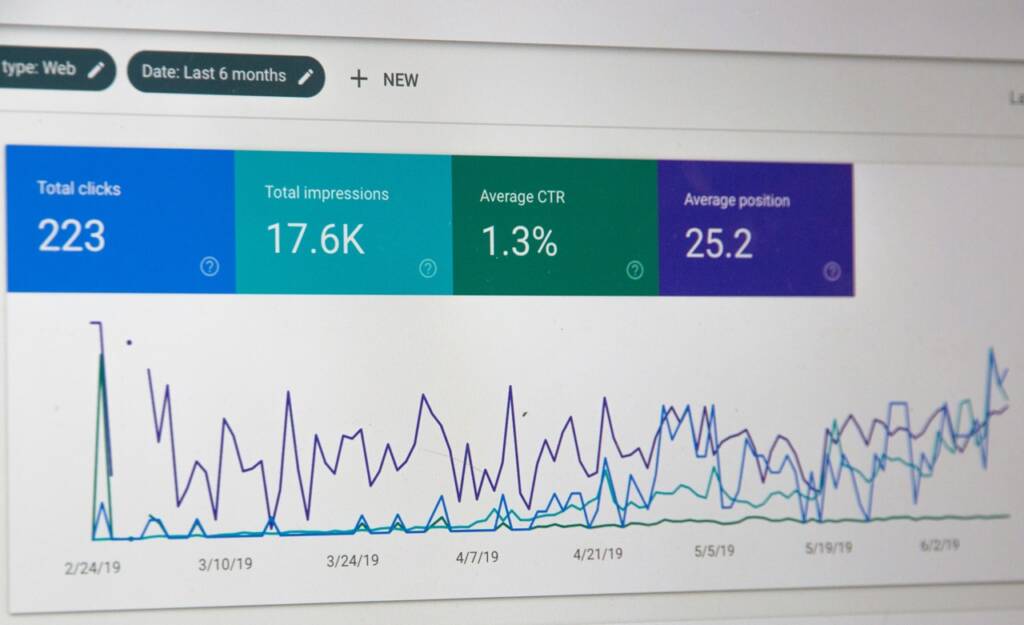“Every time you confront something painful, you are at a potentially important juncture in your life – you have the opportunity to choose healthy and painful truth or unhealthy, but comfortable delusion.”
Recessions vary in size, duration, and impact. Economists believe average recessions are part of the standard business cycle and occur approximately every six to ten years, usually lasting a few months. Major recessions occur roughly every 20 to 40 years, exampled by the Great Depression of 1929 through 1939, the stagflation crisis in the 1970s, the recession of the early 1990s, and the Great Recession of 2007 through 2009.
This article is a guide for independent business owners with a language leaning toward those of kitchen and bath design firms on how to be prepared for a recession so that your business reaches the other side of it in a position to reach your service and gross profit goals.
What is a recession?
A recession is a simultaneous trend of slowing business and consumer activity, leading to negative economic growth. It’s measured by gross domestic product (GDP) and unemployment.
What are signs of an oncoming recession?
- Two negative quarters – Two negative quarters of GDP in a row technically constitute a recession rather than a downward trend
- Inverted yield curve – Denoting investors favor long-term investments due to market expectations
- Stock market decline – The S&P 500 or Dow Jones industrial Abbott average Plymouth, investors are concerned about market future
- Credit and availability – Banks tightening their loans or offering them at exorbitant interest rates
- Decreased housing prices – Plummeting housing price permits
Recessions last relatively short; the Great Recession lasted 18 months, and the COVID-19 recession was only two months. The effects of recessions, however, can affect commerce – especially that of independent business persons – long after their initial impact.
- Put leadership over profit
- Budget your business to its core
- Develop a marketing orientation for recessions
- Maintain good practices
- Streamline your organization
- Create what-if scenarios
- Establish a cash flow forecast
- Have an accounts receivable collection strategy
- Leverage subcontractors and part-timers
- Stay close to your creditors
- Stay optimistic
Put leadership over profit
During economic hardship, kitchen and bath dealers and cabinet manufacturers see gaps in large-scale remodeling projects; when income is compromised, the goal is no longer to reach the desired profit margins for the quarter but to survive the hardships that a reduction of business creates. Successful navigation through economic downturns starts with having a survival plan.

Despite their impact on operations and gross profit margins, recessions present an opportunity for the owners of kitchen and bath businesses to take a step back from their daily operations and refresh their focus.
Planning for success and navigating through failing situations
A survey by the SEN Design Group following the 2008-2009 recession revealed that 83% of kitchen and bath design owners don’t prepare an annual budget, and 90% don’t have a strategic plan. 80% of kitchen bath design firm owners polled admitted they were unprepared for a recession.
These percentages are less shocking when taking in the US Bureau of Labor Statistics report that 20% of new businesses failed during their first two years. 45% fail within five years, and 65% fail within 10 years of opening their doors.
After 15 years a scant 25% of these businesses are profitable.
Look at successful business owners across various industries. You’ll see that they talk about seeing “the big picture” to achieve success, unique freedom, or business acumen tantamount to enlightenment and to emerge resiliently after hard times.
In some respects, this means spending money on marketing even when you’re doing well or when other businesses aren’t spending their money – although seeing “the big picture” stems from two areas of interest – knowing the numbers and being adaptable to changing times. These key operational interests are encouraged in good times and bad.
- Knowing the numbers. Financial statements’ relevancy stretches from the fundamental aspects of running a business through its efforts to expand and become a more effective, farther-reaching brand, to navigating financially depressive conditions.
- Adapting to change. Recessions make it incumbent upon owners and their teams to dexterously adapt to the change as it unfolds. In good economic times, adapting to change leads to seizing market opportunities, expanding service, adjusting service strategies, and using technology.
Believing adverse economic signals are accurate, firms should focus on preserving their business and cutting costs.
Shift focus
- Adopt a mindset of change: the change may be continuous rather than a single shift
- Focus on the client’s needs over earning a profit
- Connect with key accounts, builders, or remodeling contractors and find out firsthand the specifics behind their declining sales
- Thoroughly analyze the marketplace and take action quickly
- Decide a strategy and set a course of action for the firm to take
- Be highly visible to team prospects and clients
Paralysis from the fear of making changes that might hurt operations when the good times return is a bad mistake for business owners to make. Owners whose feet are planted in concrete are not likely to be in business when the economy recovers.`
Maintain your standards
For kitchen and bath design firms, part of the job of backend marketing is to create rewarding experiences for customers.
Recessions present the opportunity to make your marketing even stronger and resonate even more strongly with your audience by continuing it unimpeded.
The consensus among economists is that it’s critical to continue advertising during recessions for the message of leadership, vision, and strength it sends to the people it reaches.
It’s not a good idea to take on work in hard times that you wouldn’t take in good times. It can be tempting to lower your price, though think it through – dropping prices by 15% requires an additional 44% in revenue volume to capture the same gross profit dollars to cover existing overhead. As a rule of thumb, if you’re going to lower your prices by 15%, first lower your overhead by the same percentage.
- Keep marketing dollars flowing to promote your brand
- Keep your rates the same
- Take only the jobs that you would take during good times
Budget your business to its core
Essentially, you want to cut ties with all expenses that do not add value to your clients and that your operations can function without. It’s hard to do this so having a plan of what to do in difficult times is critical to making the right hard decisions when such decisions are needed.
- Review your income statement, statements, and cut all accounts, personal positions, and activities that do not add value to your clients
- Create a three-year budget to deliver insights into taking positive action when your income levels return to your accustomed level of revenue or higher
- Advertise continuously to fund your marketing budget. Showing the image of your forward-thinking, healthy firm during difficult economic times since a powerful message of leadership independent to your prospects and clients
Develop a marketing orientation for recessions
Marketing campaigns should continue during recessions. Even established companies with decades of experience must invest 3 – 4% of their revenue annually in marketing.
That percentage needs to increase – potentially double – when a severe recession sets in. Spending during recessions is wise since it allows businesses to corner the market share when fewer companies communicate with the public.

Recessions are short-term setbacks. The outflow of marketing dollars will boost ROI due to:
- Lowering ad costs
- Enhancing brand visibility
- Encouraging leads via B2C conversation
- Demonstrating loyalty to the consumer
- Being a visible leader during tough times when competition is absent
- Encouraging brand loyalty from the consumer
- Track ad campaign health through metrics and adjust strategy
Demonstrate leadership
During a recession, the only motivation for consumers to get off their sofas and look at the designs in your showroom or make a purchase will stem from a value-based message that speaks to consumer pain points.
Advertise continuously during downturns, offering insight, empathy, and loyalty to the community.
- Demonstrate optimism and show strength by being the design firm the public sees standing in tough times
- Strengthen and expand relationships by staying in touch with consumer sentiment
- Win market share and earn business in the long run
Maintain good practices
Nothing is more important than knowing the numbers to measure the health of a business. The way to have an accurate handle on business is to know the numbers flowing in and out of it. Reading the financial statements and knowing how to supply future spending to keep your business fit are essential for achieving and sustaining success and handling your business during recessions.
Key financial statements
The first part of knowing your numbers is reading the financial statements. Reading metrics, understanding how to market your business, manage social media campaigns involve other numbers to have a handle on, but it’s the financial statements that are the core of the business.
The balance sheet – A balance sheet measures a company’s cumulative financial performance from the first day of business until the day of the report. The details of a balance sheet will amount to the value expressed by the formula:
- Assets – Liabilities = net worth
Profit and loss statement – A P&L statement measures a company’s financial performance for the current year. P&L statements show a company’s income minus the expenses against it.
- Income – Cost of goods sold = Gross profit
- Gross profit – Overhead expenses = Net profit
Key indicators for measuring the success of businesses

Mastering a business involves four key practices that are accounted for on a balance statement.
First indicator
Accrual accounting. Accrual accounting is a system of accounting for all transactions a business makes when a transaction occurs.
Second indicator
Current ratio. A current ratio is a way of measuring a company’s ability to pay its bills on time. A healthy current ratio is 2:1. Banks want to see that a business can pay back its current bills and credit line within the stipulated year.
Current assets 2
————————
Current liabilities 1
A business that has less than a 2:1 ratio could become unstable. Always take the cash discounts from cabinet suppliers that offer terms such as 2% 10 days, net 30. This is an outstanding 36% ROI and should be taken all the time, even if you have to draw down on your bank credit line to take it. That credit line may charge 4% interest, so you have a positive leverage of 32%.
Third indicator
Debt to equity ratio. This ratio is the amount of debt [loans taken out by a company] to that company’s equity.
Bankers also want to see a 2:1 ratio: two parts borrowed money for every part of a company’s equity, representing the profits left. If the ratio of borrowed money exceeds a 2:1 ratio, banks are not likely to make any additional loans.
Fourth indicator
Retained earnings. The dollar amount of retained earnings that shows up as net worth on your balance sheet is the most critical indicator of the four. It’s proof positive that yours is a profitable business year in and year out.
When a firm approaches a bank for a loan, bankers want to see that they have many retained earnings. A number equal to 12 months of fixed overhead expenses assures them:
- Your company will survive a deep recession
- You’re in a position to capitalize on viable business opportunities
Identify opportunities for growth
Recessions can present growth opportunities. During the Covid recession, millions of homeowners were planning home remodels, and jobs were being booked. This is one example where marketing is ever-potent during recessions. As the pandemic wrapped, the home remodeling industry experienced a surge of gross profit with its value estimated as high as $545.6 billion in 2024.
Guidelines for owners
1. Consult a trusted business advisor or coach about downsizing plans
Talk with somebody who is a specialist in the kitchen and bath design field who’s been through it before and excels at sharing information and strategizing. You want your team to know what you’re doing Well, you want many brains on the task. One expert helping you strategize through the downfall will help you create a clear plan for navigating through the turmoil.
2. Work with key team members during downsizing
Keep everybody you can’t live without in the know on your strategic plans. Illicit feedback from your team can help owners refine kinks in their strategies. Having more brains on the task is always a good idea.
3. Be the first to take a pay cut, even if it needs to be substantial
Step up your leadership by taking the initiative on a pay cut. Signal that attends. It signals valuing your team, incentivizing them to focus on customers and eventually rebounding the firm to its gross profit goals.
4. When firing staff, do it all at once to avoid fractioning team morale
A few things are more difficult than wondering if you’re seeing your friends cut from their roles and wondering if you’re following. Firing stagnating lay-offs can lead to anxiety and resentment festering among your staff. This will help your team focus on the measures that need to be taken to navigate the business through the recession.
5. Make all operational changes simultaneously
One of the reasons why to talk this over with first a coach and then your team is to strategize how everything will look once the changes have been made. The idea is to understand the changes that need to be made, why they need to be made, and then to make them simultaneously in different times. In instances where changes will logically happen in succession when disclosing the succession of changes to your team, tell them what will happen at every step of the way while you’re doing it and what to expect.
Remain optimistic, but don’t sugarcoat this situation. Discuss the hits that can potentially come. What’s likely and what’s possible to affect the business during turbulence?
Streamline your organization
Streamlining a business is the first step in getting ready to scale. Streamlining also creates an opportunity to scale much sooner than design experience alone provides.
Mastering streamlined service can help small businesses stay afloat in multiple ways during economic downturns.
Benefits of streamlining
- Deliver quick and consistent service
- Offers three price brackets to prospects
- Conduct operations transparently to cultivate trust
- The team is on the same page for every project
- Focus on building relationships with clients
- Create a ready-to-scale model for your business
- Open satellite showrooms much sooner
- Use marketing feedback to refine practices and improve service
- Hear prospects confirm yes or no much sooner
- Complete more jobs each year
- Earn higher gross profits
By minimizing operational costs and improving cash flow, owners can earn more revenue, potentially serve more customers, and have glowing reviews and referrals in the bank. Streamlining can also help owners optimize market strategies, keep team positions lean, and provide insight for staying agile to maintain firm functionality and optimize chances for growth in early rebounds from recessions.
- Unnecessary costs are already reduced
- Further reductions can be methodically made
- Quickly adapt to faltered market conditions
- Retain customers and their satisfaction as new demand for service drops
Create what-if scenarios
Developing best-case, moderate-case, and worst-case budgets to determine which actions to take during a downturn will be the most helpful precautions to take. Specific steps can be taken to mechanize the scenarios so that the selected one is curated to the economic time.
Analyze your business to determine what operational costs can be reduced or eliminated without compromising quality of service.
Explore how reduced consumer spending and delayed projects will impact revenue.
Model different scenarios by percentages. For instance, what would your operations look like at a 10%, 20%, or 30% revenue decline? What would it look like at a loss of revenue at any of these percentages over six months, 12 months, or 18 months?
Understanding what hardships do to your business over a certain period will help you strategize where to save and spend by giving you a more accurate idea of what to expect.
Establish a cash flow forecast
A cash flow forecast should be created at the onset of an economic downturn and utilized for the duration of a recession.
Three-month cash flow forecasts are a critical tool for managing downturns. They may be ideally updated monthly or weekly when, in some cases, daily used by crisis managers to turn companies’ fortunes around.
Given individual situations, updating these monthly, weekly, or even daily in the direst instances or unpredictable markets may be appropriate.
Key supporters of cash flow
Accounts payable aging – Summarizing a firm’s unpaid bills to its vendors
AP show:
- Total unpaid invoices owed to creditors and vendors
- The amount of time that has elapsed since the due date
- Creditor and vendor names
- Payment terms
- Balance due
Accounts receivable aging – Categorizing a company’s customer invoices
AR show:
- Balance due by customer
- Time lapsed since due date
Balance sheet – A financial statement displaying the assets, liabilities, and equity of a company for a stated point of time
BS show:
- Assets – Company resources of monetary value, i.e., cash, inventory, property, equipment, and investments
- Liabilities – A company’s debt, such as loans, credit cards, debts, tax liabilities, and funds owed
- Equity – Funds in a company holding left over from subtracting liabilities from assets
Income statement – A financial document summarizing the revenue expenses of a business over some time, also known as a profit and loss statement (P&L)
IS show:
- Revenue – Income earned from selling products and services
- Expenses – Costs of producing and selling products and services
- Net profit – Difference between income and expenses, identifying profitability
Forecasting leads and sales orders
Tally leads and sales orders, then add them to the three-month forecast, and you will gain insight into where their company is going.
- KPI comparisons – Compare results for each key performance indicator (KPI) of your budget against company goals
- Performance projections – Project end-of-the-year results based on cumulative monthly percentages of each KPI developed from historical performance
For example, if historically 60% of your leads are expected to be received by May 1 and you have received 35, then your year-end projection would be 58 (35 ÷ .60 = 58.3)
Have an accounts receivable collection strategy
Choose a superstar from your administrative team who will tenaciously go after those entities who owe your firm payment. To complete the job efficiently, the superstar should be charismatic, direct, and clear with outstanding accounts.
There are three categories of nonpayment:
- Can’t pay
- Shouldn’t pay
- Won’t pay
Clients who “can’t pay” can be coaxed into payment over more extended periods of time.
Those who “shouldn’t pay” – such as because they feel the job was not done to their specifications – can be offered a grace period. Giving customers a more extended period to pay off their home investment will not forget your leniency when economic times are good again.
Clients who “won’t pay” ought to be offered an extended period to pay. If they refuse, decide if you will take third-party action to collect those funds.
Leverage subcontractors and part-timers
Delaying needed cuts is the number one reason businesses fail during downturns.
Implementing three cost programs can save a business:
- Cost control
- Cost avoidance
- Cost reduction
All turnarounds are strategic and should be planned quickly and thoroughly. Focus on being effective rather than being efficient. To be effective, an owner must use historical data to project into the future.
Following this strategy will save a lot in benefit payments and payroll taxes. Cutting hours or paying is only a short-term solution; use these strategies only in obvious, temporary situations.

Stay close to your creditors
When cash flow is tight and the creditors are calling, be upfront with them. This will give you the most negotiating room to move.
- Disclose down-sizing plans directly
- Be clear as to when you can realistically send them a payment
- When dealing with surprise payment delays, contact your manufacturer immediately
- Work with your creditors on solutions and negotiate new terms when possible
- Avoid making commitments that may hinder your ability to purchase from other vendors
- Keep your commitments to creditors within your means
Stay optimistic
Talented leaders remain optimistic during recessions by having a plan to navigate through them. Have people you trust in your confidence in advance of a downturn so that when the economy takes a hit, you have a coach to help you strategize through the difficult times.
- Refine your niche – Work at the things you’re good at and refine your approach to a service so that after the downturn, your opportunities are stronger than ever
- Celebrate small wins – Acknowledge completed projects and customer satisfaction firm-wide, host open houses and house warmings whenever available with clients who have recently completed kitchens
- Strengthen your brand – Economic downturns are a time to keep marketing strong. Continue to fund marketing equally or increase its budget during a downturn to gain the monopoly. The show of strength will pay off when the jobs start coming in again. Recessions are the time to advertise strong in the market and in the backend
- Strategize scaling – A lack of business in the present can be an incubation period to plan how operations will go from streamlined to scaled in the near future
- Engage alternatives – Promote cost-effective solutions alternative to remodeling such as cabinet replacement, hardware, swaps, and affordable luxury upgrades that cater to recession-conscious homeowners
Strategizing how to make it through the immediate future, using the time wisely to plan for increased business, focusing on client satisfaction, and advertising are the main things to consider during recessions.
Being a part of a buying group can be a big morale boost because when networking isn’t done in person, it’s done remotely, and understanding how your peers from across the country are faring through economic downturns can, in turn, help you make the decisions you need to do to finesse through difficult times and thrive on the other side.
—SEN Design Group
SEN’s coaching helps kitchen and bath design firms reach their revenue goals.
Contact SEN to master strategic planning, sell more products into each job, leverage industry-specific tech developments – Good-Better-Best selling – and other smart kitchen and bath design solutions.
Sign up for SEN University’s in-person schools and online business courses.




